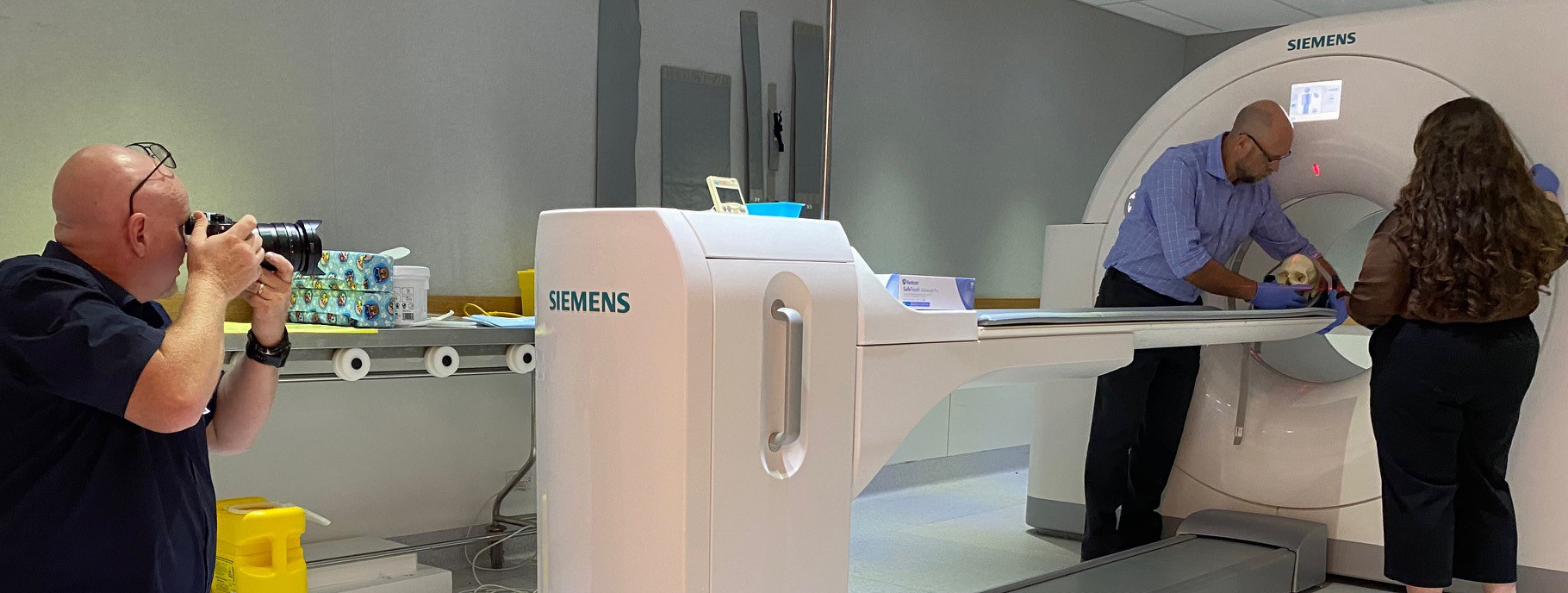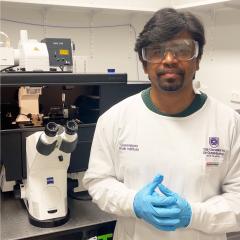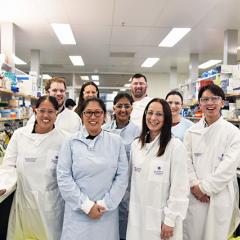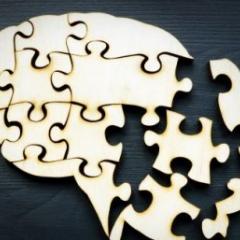UQ’s School of Biomedical Science’s Laboratory for Human Craniofacial and Skeletal Identification (HuCS-ID Lab) has been featured in a short film at the 2024 American Academy of Forensic Sciences (AAFS) Thought Leadership Series on AAFS|TV.
Established in 1948, the AAFS is America’s premiere Forensic Science Society with 6,500 members located in 71 countries. The Academy promotes “justice for all, integrity, competency, education and encouraging collaboration in the forensic sciences”.
Chief Anatomist in the HuCS-ID Lab, Associate Professor Carl Stephan, said that the lab’s invited inclusion reflects the research and training esteem the Laboratory has built over the last decade at UQ.
“The film featuring our lab is called “Forensic Anthropology at the Front Lines of Repatriation & Skeletal Identification” and it provides a glimpse into our much larger forensic anthropology research program. Featured in the film are some recent advances in facial approximation and video superimposition.
“We’re proud to showcase some of the lab’s emerging young forensic scientists who are in training and completing PhDs, namely Telena Hona and Sean Healy – and to represent the School of Biomedical Sciences and The University of Queensland”, he said.

Facial approximation is the method of estimating a face from a skull under blind conditions. Video superimposition involves comparing a photo of a face before death to a skull to determine the anatomical consistency for identification. Both methods may be used when DNA comparisons are not possible.
“These methods of identification are used more frequently than you might suspect for complex skeletal cases, said Dr Stephan.
“DNA success depends heavily on both the ability to extract viable test samples and the ability to compare these to viable reference samples. If either component is not available, DNA cannot be used.
“Research discoveries in the HuCS-ID lab have enabled us to fill gaps, where DNA cannot be used, with other methods. This includes new developments in radiographic comparisons, and rewriting facial approximation and video superimposition methods, to improve their reliability.
“We tackle these challenges in a systematic and phased manner to address the most fundamental (and in some cases the most neglected) issues first. For example, an inability to estimate the camera-to-subject distances for face photographs used in video superimposition has been a major stumbling block for the past 80 years.
“That was until we produced and tested new methods that enabled this undertaking using the palpebral fissure length as the key ingredient (published as recently as last year). This innovation underpins a new scientific basis for video superimposition, whereby skulls and faces can be legitimately compared, both photographically and anatomically moving forwards. This research development is a major achievement – reliable determination of the focus distance from plain face photographs was previously thought to be impossible. Now with our contributions it is not only possible, but quantitatively demonstrated to be possible.
“It’s critical that the forensic science tool kit includes methods additional to mainstream techniques, so these can be deployed when routine methods cannot be. It is these cases, that represent some of the biggest challenges in forensic anthropology today.”
Another forensic challenge the HuCS-ID lab are helping to solve, is the identification and repatriation of fallen US Soldiers from the Korean War.
The Lab provides critical mission support to the USA Department of Defense, Defense POW/MIA Accounting Agency (DPAA) to help identify fallen soldiers via chest radiograph comparisons.
Presently, there exist 7,483 ongoing Unaccounted-For from the Korean War that DPAA is working to resolve.
Dr Stephan provides specialist support to DPAA via a joint multi-agency initiative between the DPAA, SNA International and The University of Queensland.
As part of the agreement, Dr Stephan provides advanced training in radiographic anatomy of the chest to DPAA scientists who fly from Pearl Harbor and Omaha to Brisbane annually to receive training at UQ.
“Simulators and 3D computer graphics only get you so far. To be competent, especially where AM reference image quality may not be ideal, analysts must know precisely and exactly the real anatomy and its radiographic manifestation with certainty.
“It’s not good enough for gaps in understanding or abilities to exist. When the target is real world applied competency at the highest levels, such as this, analysts must know exactly what they are doing - only training incorporating real anatomy delivers this,” he said.




